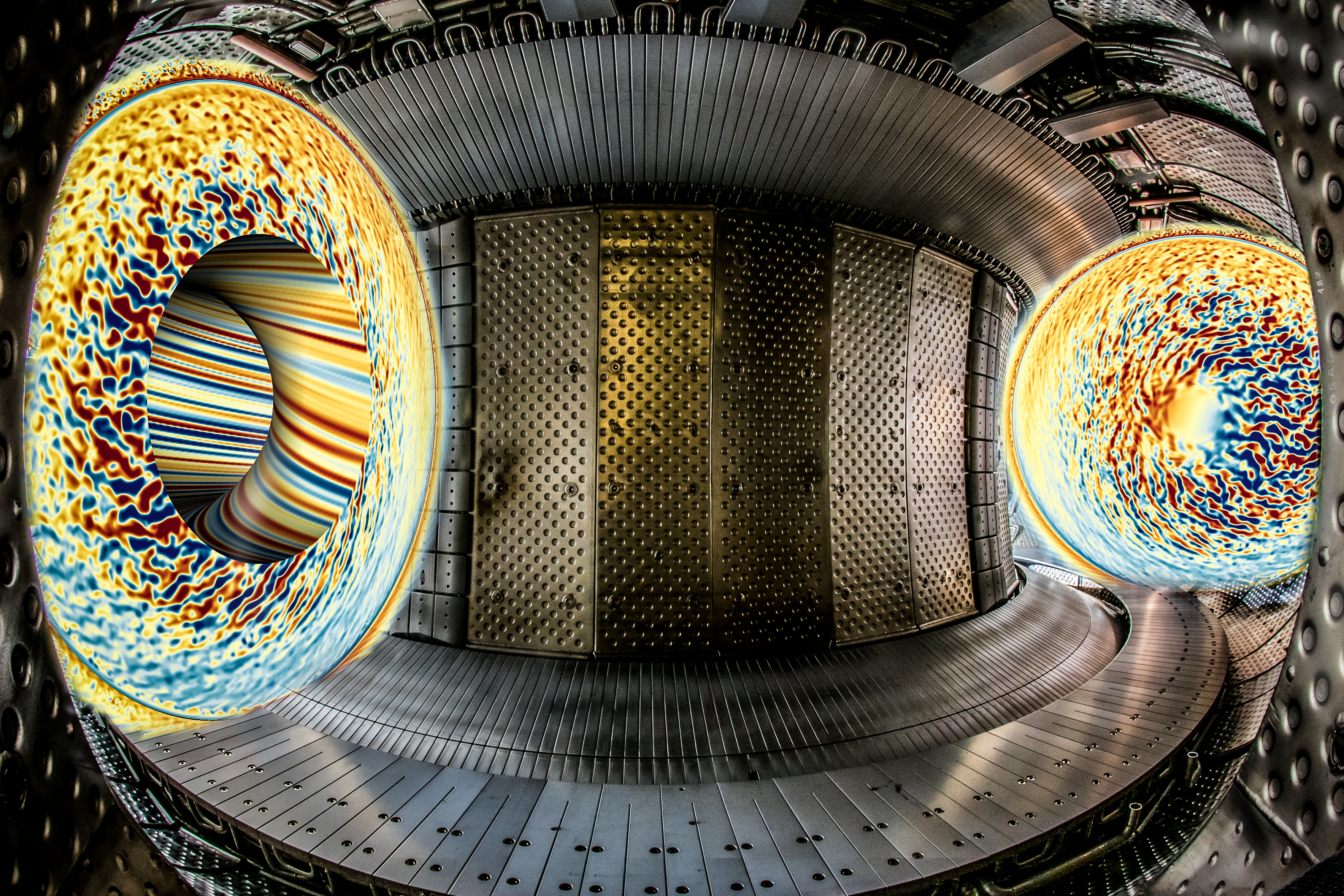|
|
|
Résumé des conférences > Session thématique I et II : fusion par confinement magnétiqueLa fusion par confinement magnétique : le long chemin du rêve à une réalisation expérimentale
Philippe GHENDRIH, Institut de Recherche sur la Fusion par confinement Magnétique, CEA Cadarache.
La recherche sur la fusion par confinement magnétique doit faire la démonstration de l’utilisation pacifique de l’énergie thermonucléaire. La possibilité d’une telle source d’énergie s’inscrit dans le cycle des grandes découvertes de la physique au début du XXième siècle. L’enjeu devient politique et de nos jours, par-delà les aléas et les dissensions, elle fait l’objet d’une collaboration internationale entre sept partenaires pour la construction et l’opération d’ITER à Cadarache (France), site proposé par le partenaire européen.
ITER est un dispositif expérimental de confinement d’un plasma par un champ magnétique dans une configuration appelée tokamak. C’est un triple défi, d’organisation avec la mise en œuvre et la construction, technologique avec un prototype qui est un concentré de hautes technologies faisant d’ITER un paradis pour l’ingénieur, enfin un défi pour la physique, celui d’obtenir un plasma en régime de combustion thermonucléaire.
Le plasma est dit le quatrième état de la matière, il est produit quand les atomes se scindent en noyaux chargés et en électrons libres. Ce milieu chargé est alors sensible aux forces électromagnétiques. Un champ magnétique intense est ainsi utilisé pour confiner ce plasma et le porter à des centaines de millions de degrés, température qui doit être atteinte pour que le bilan de production d’énergie puisse être rentable. Bien que classique – elle n’est que marginalement relativiste et les effets quantiques sont limités – la physique des tokamaks est celle d’un système complexe. Elle vise à conjuguer des objectifs qui apparaissent antinomiques : une performance de confinement élevée au centre du plasma, un dépôt de chaleur sur les parois qui évite un vieillissement accéléré de ces dernières. Dans un cas comme dans l’autre, l’élément central est le transport de chaleur par la turbulence. Cette dernière est associée à l’auto-organisation du champ électrique. De manière qui peut sembler surprenante, cette physique est très proche de celle des écoulements dans les atmosphères planétaires.
Après avoir évoqué l’histoire de la fusion, ITER et sa construction, les enjeux des recherches actuelles seront abordés, notamment la physique du transport turbulent. Dans ce cadre, les simulations numériques, cumulant des millions d’heures de calcul sur les supercalculateurs, seront présentées. Elles constituent un nouveau front de la connaissance et de nouveaux défis pour la recherche.
|



